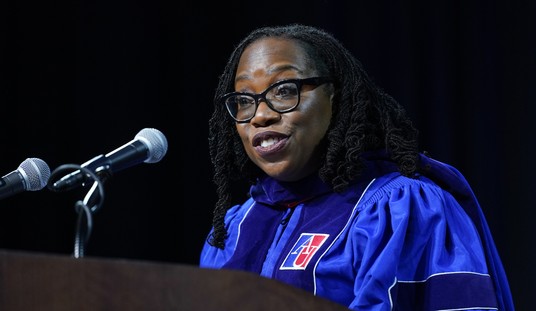Even before the fires around LA County were under control it was clear that the situation was going to be a disaster for California's struggling insurance industry. In case you've missed all of this, here's a brief rundown of what was happening before the recent wildfires.
State Farm, the largest insurer in the state, announced it would not write any new policies back in May 2023. Allstate followed about a week later and then Farmers Insurance announced they were capping the number of new policies they would write. Hartford Financial Services Group and USAA also pulled back. Last April, State Farm canceled 72,000 policies including around 1,600 policies in Pacific Palisades. Many homeowners were forced to buy expensive policies from California's insurer of last resort, the FAIR plan, a pool made up of people no one really wanted to insure.
On top of this shaky market we now have the tens of billions (some estimates say $45 billion) in damage caused by the recent LA wildfires. Earlier this month State Farm asked the state insurance commissioner for an emergency rate hike of 22 percent.
On Monday, the company sent a letter to the California Department of Insurance asking for an immediate interim rate increase — including an average 22% hike for homeowners, 15% for condo owners and 38% for rental dwellings — as it faces the most costly natural disaster in company history...
State Farm General’s preliminary financial results show its policyholder surplus was just $1.04 billion at the end of 2024 — down from $4 billion in 2016, according to the company. As of Feb. 1, the company has paid more than $1 billion in claims related to the Los Angeles wildfires, making it responsible for roughly a quarter of the total payments that have gone out to wildfire survivors so far. State Farm said expects its payments to quickly rise once debris removal and rebuilding begin.
In other words, State Farm is already tapped out and the payments to claim holders have only just started. But the state insurance commissioner's response was a firm no.
In a rebuke to the state’s largest insurance company, California Insurance Commissioner Ricardo Lara announced Friday he will not grant State Farm General’s request for an emergency rate hike in the wake of the Los Angeles wildfires.
Lara sent the company a letter Friday demanding that it provide concrete proof of its poor financial state before regulators consider letting it implement massive price increases for homeowners, condo owners and home renters. The company had sought to raise rates by 22% for homeowners, 15% for condo owners and 38% for rental dwellings.
From what I can tell, Commissioner Lara has known about the financial condition of State Farm for nearly a year now. Specifically, the company sent him a letter last year informing him about their declining surplus and the need to rebuild it. The company put in a request for a 30% rate hike last summer which was still pending at the time the fires began.
Refusing to agree to requested rate hikes, a system designed to save Californian's money, is exactly why so many companies have stopped writing policies or simply left the state altogether. Why the state wants to play chicken with it's biggest remaining insurer after one of its most expensive natural disasters is anyone's guess. I don't know but I suspect the denial is more about politics than providing proof the money is needed. But this is not going to look very smart in retrospect if State Farm decides to pull the plug on the entire state.
An insurance company has different levers it can pull if it’s concerned about its financial state. It can stop taking new customers. It can raise its rates on current customers. It can also not renew existing customers.
State Farm has pulled all of these levers to varying degrees already...
In the wake of last month’s devastating Los Angeles wildfires, the company warned its future financial woes could trigger a “dire situation” for both State Farm customers and the California market as a whole. It could in theory pull its last lever of all — exiting the California market, sparking chaos for one million homeowners, in addition to its multitude of commercial policies, and the market as a whole.
Meanwhile two other California insurers just got their rate hikes approved.
Regulators have given two major insurers the OK to begin raising rates for 660,000 customers starting later this year.
Mercury General, the fifth largest home insurer in the state, will begin raising rates in late March for its 579,300 homeowners, condo owners and dwelling rental policyholders by an average of 12% for homeowners (less for condo and rentals), filings with the California Department of Insurance show. And those who get their homeowners insurance through Safeco, a subsidiary of fourth-largest insurer Liberty Mutual, will see rates rise by an average of 7.2% in May. About 86,700 customers are affected.
Finally, state lawmakers are also proposing a new law that would force insurers to payout 100% of a policy's value without the need to itemize losses.
If passed, the legislation would make California the only state in the country requiring 100 percent insurance payouts without such itemization. Similar legislation in Oregon and Colorado following catastrophic fires in those states require insurers to pay 70 and 65 percent of the coverage limit, without an inventory, according to Emily Rogan, a senior program officer for United Policyholders, which supports the rights of consumers.
On the one hand, lawmakers are eager to be seen doing something for homeowners who lost everything. On the other hand, maximizing payouts while withholding rate hikes is a way to send insurers headed for the exits.
The bottom line is that home insurance is about to get much more expensive in California, either because insurers leave the state or because they get the rate hikes they are demanding to stay.








Join the conversation as a VIP Member